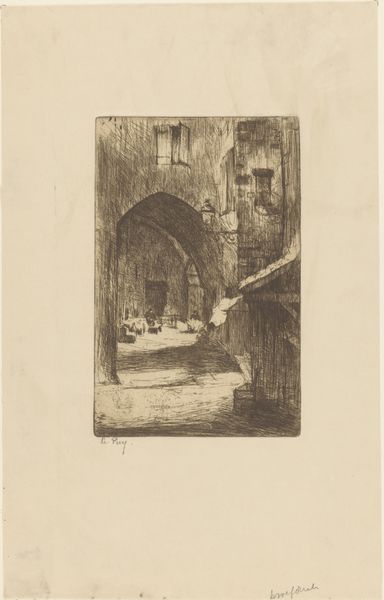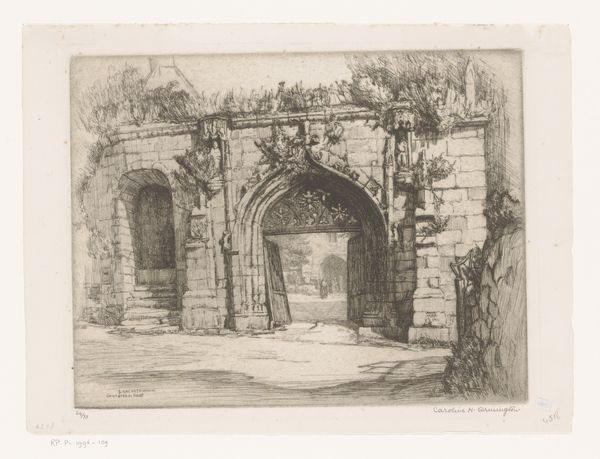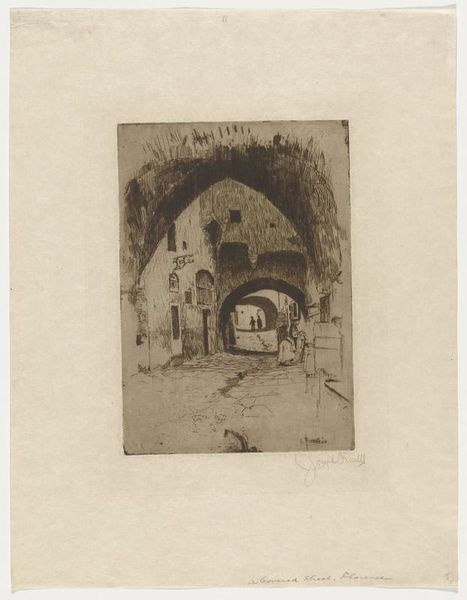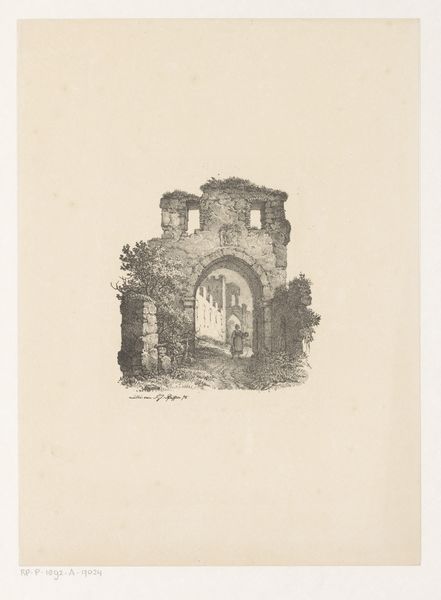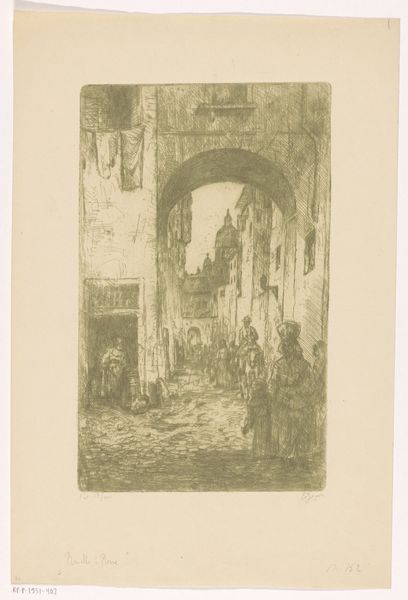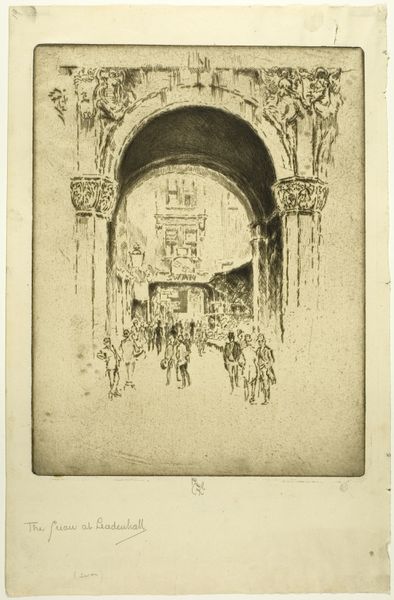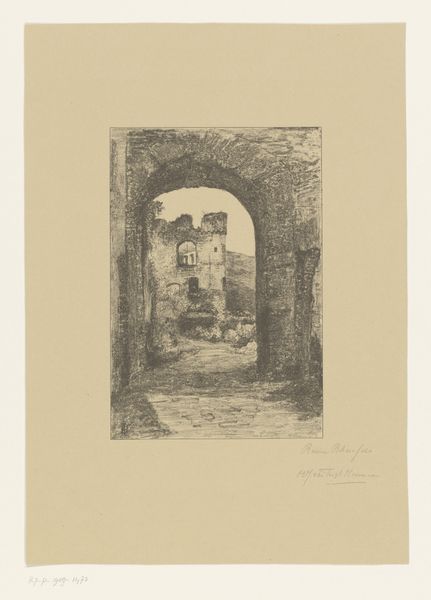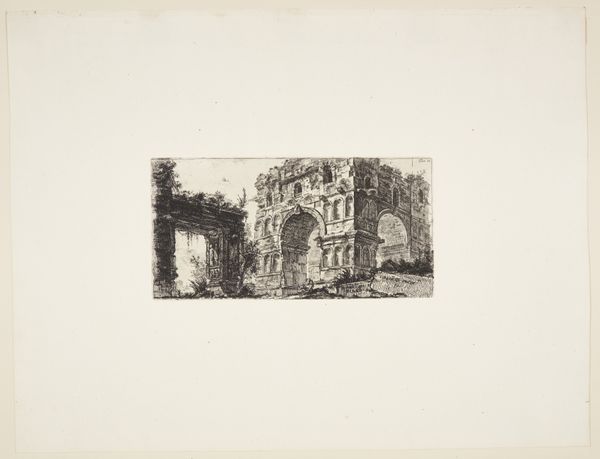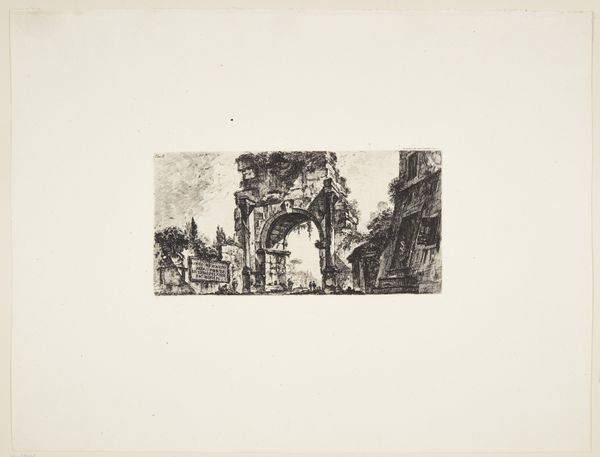
#
light pencil work
#
pencil sketch
#
old engraving style
#
personal sketchbook
#
ink drawing experimentation
#
pen-ink sketch
#
ink colored
#
sketchbook drawing
#
watercolour illustration
#
sketchbook art
Dimensions: height 160 mm, width 130 mm
Copyright: Rijks Museum: Open Domain
Willem Adrianus Grondhout made this etching, Ulm, sometime in the early 20th century. It’s kind of amazing how much information Grondhout conveys with such a minimal approach; he’s really letting the process do the work. Take a look at the top of the archway. Notice how the lines are almost scribbled, yet they create a sense of depth and texture. It feels like he’s scratching right into the surface of the plate, doesn't it? You can almost feel the grit under your fingernails. The light isn’t hitting that stone evenly, which gives the whole building that feeling of being weathered. There's a quality to etching that always reminds me of artists like Piranesi, whose architectural prints use a similarly evocative line. It’s like they’re both tapping into a shared language of mark-making, echoing each other across time. Ultimately, it's all about the conversation between artists, where each voice adds something new to the mix.
Comments
No comments
Be the first to comment and join the conversation on the ultimate creative platform.
